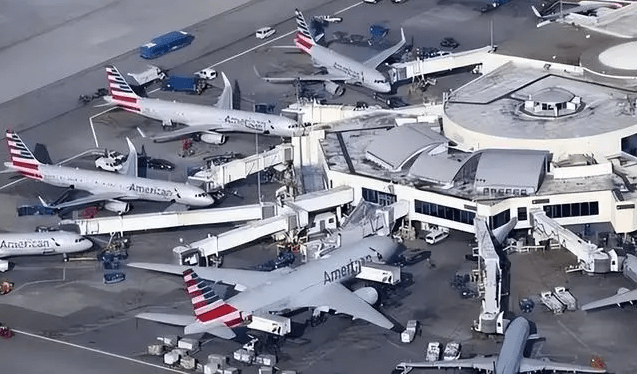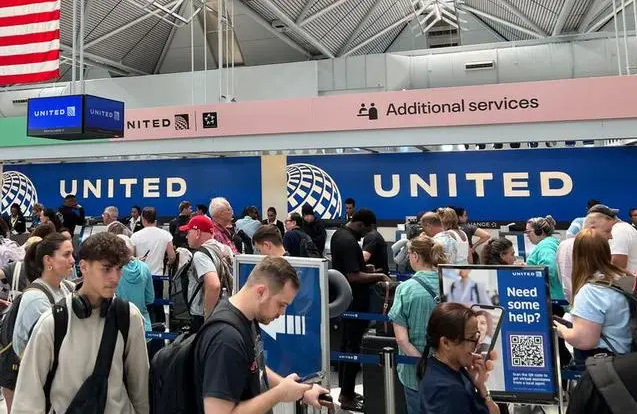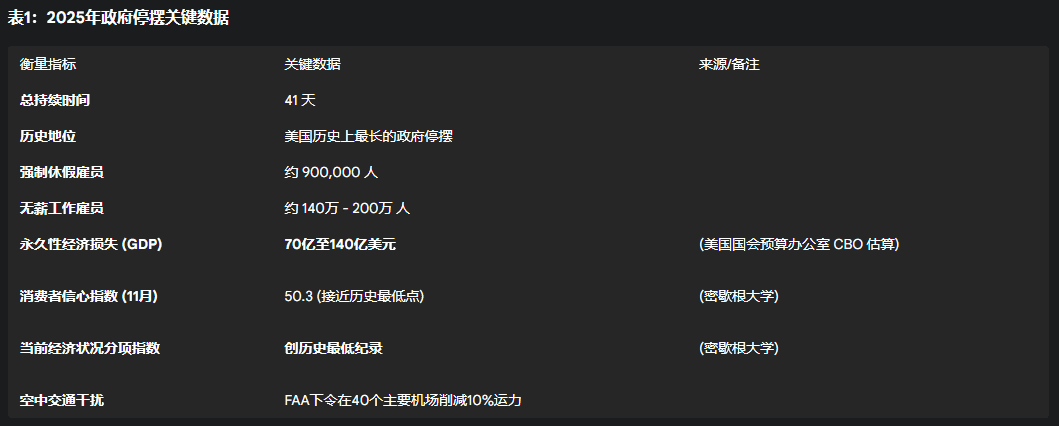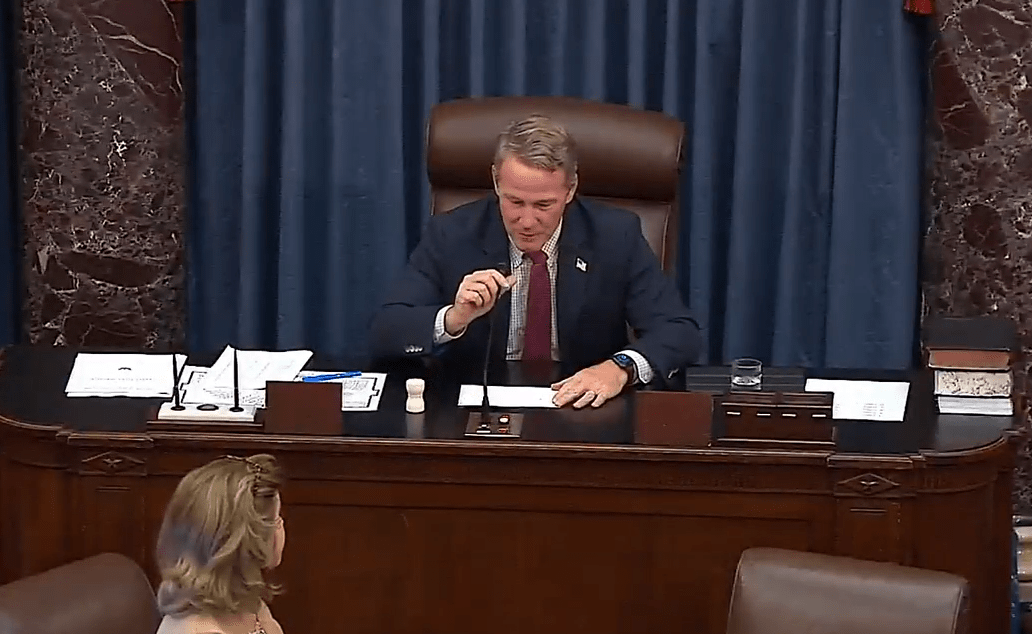(This article was updated on Beijing time November 11, 2025)
On November 5, 2025, the U.S. federal government entered its 36th day of shutdown, officially breaking the previous record of 35 days set during the 2018-2019 shutdown. Ultimately, this political deadlock lasted a full 42 days.
During these 42 days, nearly 900,000 federal employees were forced to take unpaid leave, and up to 2,000,000 workers in 'essential' positions— including airport security and air traffic controllers— worked 'unpaid' without salary.
This article will quickly outline the core context of this crisis: why are the two parties so unwilling to compromise? What costs have ordinary people paid? And how was the deadlock broken?
A Guide to Understanding the Meaning of (Shutdown)

Q1: What Exactly Is a 'Government Shutdown'?
Simply Put, It's a 'Funding Cutoff' for the U.S. Government.
The U.S. Congress Controls the 'Purse Strings' and Must Pass 12 Appropriation Bills Each Year to Fund the Government. If the Bills Are Not Passed Before the New Fiscal Year Begins (October 1) and No Temporary Funding Agreement (Known as a 'Continuing Resolution') Is Reached, a Law Known as the (Anti-Deficiency Act) Will Go Into Effect.
This Law Prohibits Federal Agencies from Spending Money Without Congressional Appropriations. Therefore, All 'Non-Essential' Departments Must 'Close Their Doors', While Employees of 'Essential' Departments (Such as Airport Security and Border Patrol) Must Continue Working Without Pay.
Q2: Are Shutdowns and 'Debt Ceilings' the Same Thing?
No, These Are Two Completely Different Concepts.
Government Shutdown: This Is a Political Struggle Over Future Budgets. The Focus of the Debate Is How to Spend Money Next Year.
Debt Ceiling: This Is a Credit Crisis Over Past Bills. The Focus Is on Whether the Government Should Pay Bills That Have Already Been Incurred.
The Key Point Is: This Shutdown in 2025 Did Not Coincide with the Imminent 'Debt Ceiling' Crisis. The Debt Ceiling Crisis Could Trigger a Global Financial Market Collapse, While a Government Shutdown Would Not. Because There Is No Threat of Such a 'Systemic Collapse', Both Parties Had the 'Confidence' to Maintain This Standoff for 42 Days.
The Core of the Dispute: What Are Both Parties Arguing About?
The Core Dispute of This Crisis Is Only One: The Premium Subsidies of the (Affordable Care Act, ACA).
These Subsidies, Increased During the Pandemic, Helped Millions of Americans Afford Health Insurance, but They Are Set to Expire Automatically at the End of 2025. If Congress Does Not Act, Millions Will Face Soaring Health Insurance Costs in 2026.
Thus, Both Parties Engaged in a 'Coward's Game':
The Democratic Position (Senate Leader Schumer): Refusal to Vote for Any Government Appropriation Bill That Does Not Include Extended ACA Subsidies.
The Republican Position (President Trump, Congressional Leaders): Firm Refusal of 'Hostage Negotiations'. They Demand That Democrats Fund the Government First, Then Discuss Health Insurance Issues.
This Dispute Is a Continuation of a Series of Legislative Battles in the Summer of 2025, Where Both Sides Have No Retreat, Leading to the Stalemate on October 1.
The Cost of 'Closing the Doors': Who is Paying the Price?
Federal Employees: Public Servants in Line at Food Banks
 The Most Direct Victims Are Approximately 2.9 Million Federal Workers. Although the Law Guarantees They Can Receive Back Pay Afterward, Being 'Owed' Wages for More Than a Month Is Devastating.
The Most Direct Victims Are Approximately 2.9 Million Federal Workers. Although the Law Guarantees They Can Receive Back Pay Afterward, Being 'Owed' Wages for More Than a Month Is Devastating.
This Led to Heartbreaking Scenes: Near a Major Air Force Base in Ohio, Local Food Banks Reported That the Number of People Seeking Food Assistance 'Doubled'. In Washington D.C., Demand Increased by 20%.
Air Traffic: A Nationwide 'Artificial' Paralysis


The Breaking Point of This Crisis Ultimately Occurred in the Sky.
Air Traffic Controllers (ATC) and Airport Security (TSA) Are Considered 'Essential' Positions and Were Forced to Work Without Pay. As the Shutdown Enters Its Second Month, The Situation Rapidly Deteriorated Due to Staff Shortages and Financial Pressure.
Ultimately, the Federal Aviation Administration (FAA) Took Unprecedented Extreme Measures: Ordering a 10% Reduction in Flight Capacity at 40 of the Busiest Hub Airports Nationwide. This Move Immediately Triggered Global Travel Chaos, Resulting in Thousands of Canceled Flights and Putting Enormous Pressure on Politicians.
Public Services: An 'Invisible' Catastrophe
Public Welfare: National Parks and Smithsonian Museums Closed. Pensions (Social Security) Can Be Disbursed on Time, but All Supporting Services (Such as Issuing New Cards and Correcting Records) Are Completely Halted.
Research: The Operations of the Leading Biomedical Research Center in the World - The National Institutes of Health (NIH) - Are Essentially Paralyzed. The American Association for Cancer Research (AACI) Issued an Urgent Statement: The NIH's Clinical Trial Center Has Stopped Accepting New Cancer Patients. The Statement Warns That Such Delays 'Could Mean the Difference Between Life and Death'.
Welfare: The Funding for the WIC (Women, Infants, and Children) Program for Low-Income Women and Children Is About to Run Out. In Some States, November's SNAP (Food Stamp) Benefits Can Only Be Paid Out in Partial Amounts. The Trump Administration Had to Urgently Reallocate Funds to 'Patch Up'.

Fragile Agreement: How Did the Stalemate End?

After 40 Days of Stalemate and 14 Failed Votes, the Defense Line Finally Crumbled.
The Turning Point Occurred on November 10. Faced with the Paralysis of Nationwide Airports and the Imminent Cutoff of Public Welfare, a Group of Moderate Senators Could No Longer Bear the Pressure. In a Crucial Procedural Vote, Eight Democratic Senators (Including Jeanne Shaheen from New Hampshire) Chose to 'Switch Sides' and Joined the Republican Camp.
This Final Agreement Is a Fragile Compromise:
What Did the Republicans Win? They Achieved a Key Principled Victory. The Government Reopened, and the Bill Did Not Include the ACA Health Insurance Subsidies That Democrats Insisted On.
What Did the Democrats Get? The Government Reopened and Received a Commitment: Republicans Agreed to Hold a Separate Future Vote on ACA Subsidies in Mid-December.
This Is a Tactical Ceasefire. Democratic Leader Schumer and House Leader Jeffries Both Voted Angrily Against This Agreement, Clearly Realizing That Using the Powerful Leverage of 'Closing the Doors' Only Yielded a Weak Commitment to 'Future Voting'.
More Importantly, This Agreement Only Extends Government Funding Until January 30, 2026, Meaning the U.S. Will Face Another Shutdown Crisis in Just Two Months.
According to Reports Today: The U.S. Senate Approved a Bill to End the Government Shutdown and Sent It to the House of Representatives. What's Left Is the House Vote and the Signature of President Trump.
Conclusion: An Endless Cycle?
The 42-Day U.S. Government Shutdown in 2025 Ended with Permanent Economic Losses of Up to $14 Billion, Record Consumer Confidence Collapse, and Stagnated Life-Saving Research.
But the Problems It Reveals Are Far from Over. Government Shutdowns Have Become a 'Recurring Feature' of American Politics, a 'New Normal' Where Political Polarization Overrides Public Welfare.
The Agreement on November 10 Did Not Resolve Any Fundamental Issues; It Simply Pressed the 'Pause Button'. This Record-Breaking Shutdown May Not Be the End of a Crisis, but Just the Prelude to the Next One.
(The Above Content Is in Beijing Time (UTC+8))
#美国政府停摆 #美国ADP数据超预期 #加密行情